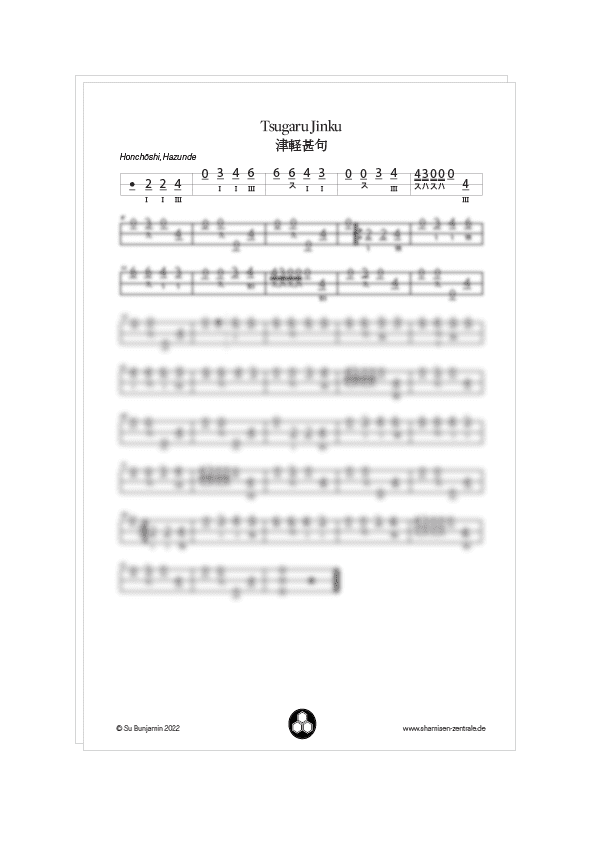Tsugaru Jinku
This is what you’ll get:
- 2 pdfs: tabulature notation in two versions (with and without maebachi)
- 2 mp3 files: mp3 play along files in two speed versions
Song specifications:
- advanced beginner level
- honchōshi tuning
- hazunde rhythm
2,95 €
Details
Get the notation for Tsugaru Jinku plus super useful play along files to help you learn and practice the song!
The notation comes in two different versions: with and without maebachi indication. Why? Because it can be easier to play the maebachi when it’s indicated in the notation, but if you don’t play this technique yet, it can be distracting when you see additional signs in the notation that you don’t use 🙂
The mp3 play along files come in two different speed versions: 90 bpm and 110 bpm.
You can download the files from your customer account page after the purchase – a link will be provided in the order confirmation e-mail.
Wanna have a short listen to see if you like the tune? Here’s the beginning of Tsugaru Jinku:
About the song:
Tsugaru Jinku is a very popular traditional Japanese folk song from Aomori Prefecture. As every folk song, it comes in countless variations. This version is written out for shamisen in bunkafu (tabulature) notation. This version is without lyrics and is suited for advanced beginners. The little 4300-phrases used as ornamentations throughout the piece are a great way to slowly get used to this essential building block of Tsugaru Shamisen music. This song is written in hazunde (shuffle/swing) which emphasizes its lively character. Add maebachi-technique to fully bring out the dynamic of this typical Tsugaru Minyo piece.
- Tuning: Honchōshi
- Techniques: sukui, hajiki, tsuretara, maebachi
Note: The gray dotted line indicates the beginning of the verse. A second pdf is provided with colored markings indicating maebachi.
Tuning:
In every tuning, the strings are tuned in a certain relation to each other. For folk songs, there’s no fixed rigid tuning to a definite pitch (in contrast, the A-string on the violin is always tuned to 440 or 442hz) but what’s most important is how the strings are tuned in relation to each other.
A good rule of thumb is to tune your instrument over the base of C. This means, the big string will be tuned to C and the other strings according to the tuning of the song:
Honchōshi: C-F-C
Niagari: C-G-C
Sansagari: C-F-Bb
Access to the pdf and mp3:
Please note that this item is downloadable once only – just as receiving a physical copy of the scores would be. Consider it a “direct delivery” 🙂
After the purchase, you can download the file from your account page under “downloads” or via the link in your order confirmation email.
Make sure you save your file in an easy to locate directory. Please don’t hesitate to contact us via email if you need further assistance.
